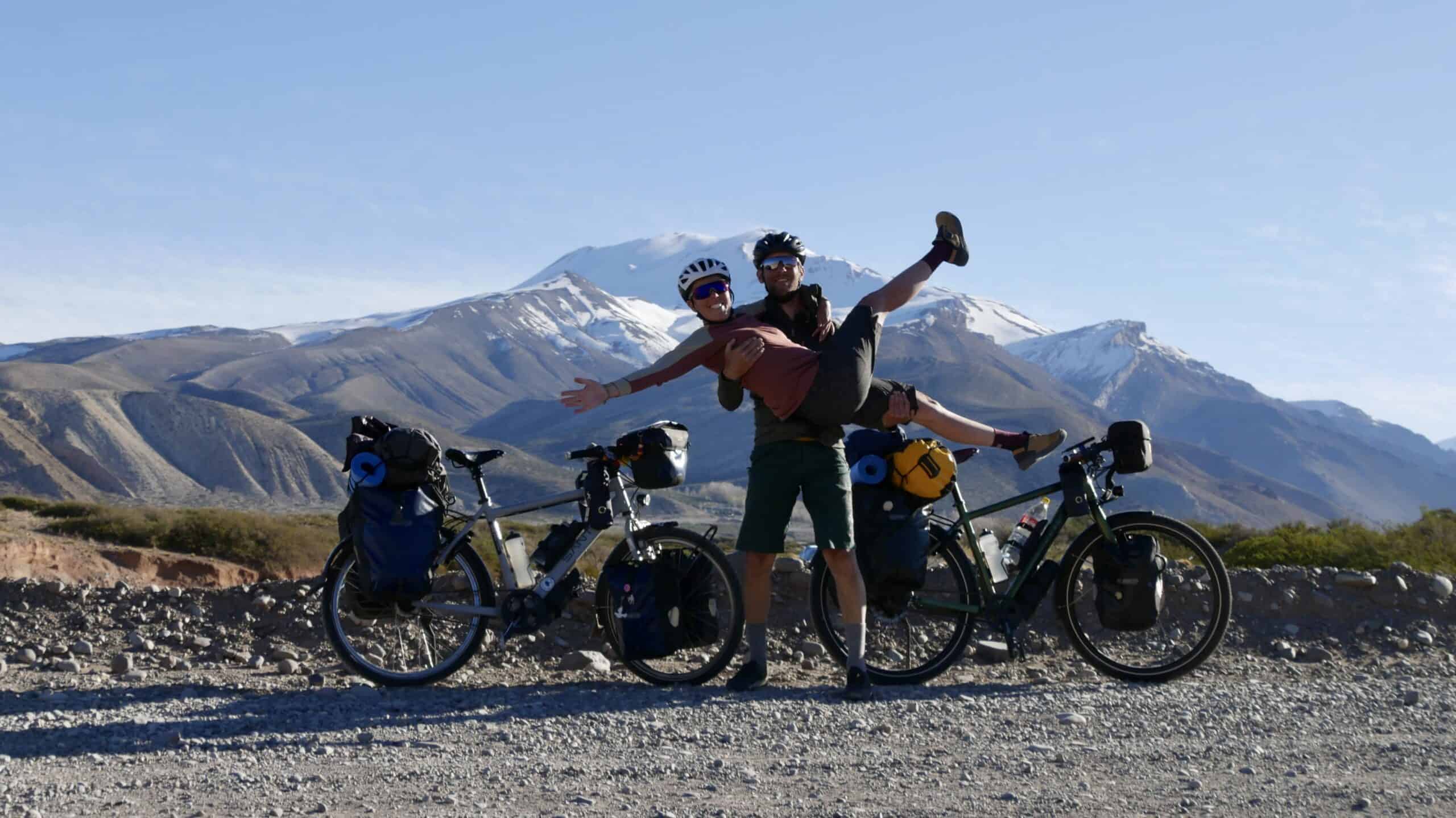
Ruta 40, the beginning…
The Ruta 40, that is the road we were looking forward to. The road that will lead us south along the foothills (and sometimes over the ankles) of the Andes. The road we could follow from Mendoza. At 5224km, it is one of the longest roads in the world. It crosses Argentina from the northern border with Bolivia to Tierra del Fuego. We expect to bike roughly half of its entire length. Here you can see the part we covered in the past two weeks.
For the first few days after leaving Mendoza, we still have to make do with just the views and longing for the mountains. But as the days progress, the climbing and descending begins (finally) for us too, and we find ourselves increasingly surrounded by a hilly landscape and real mountain peaks.
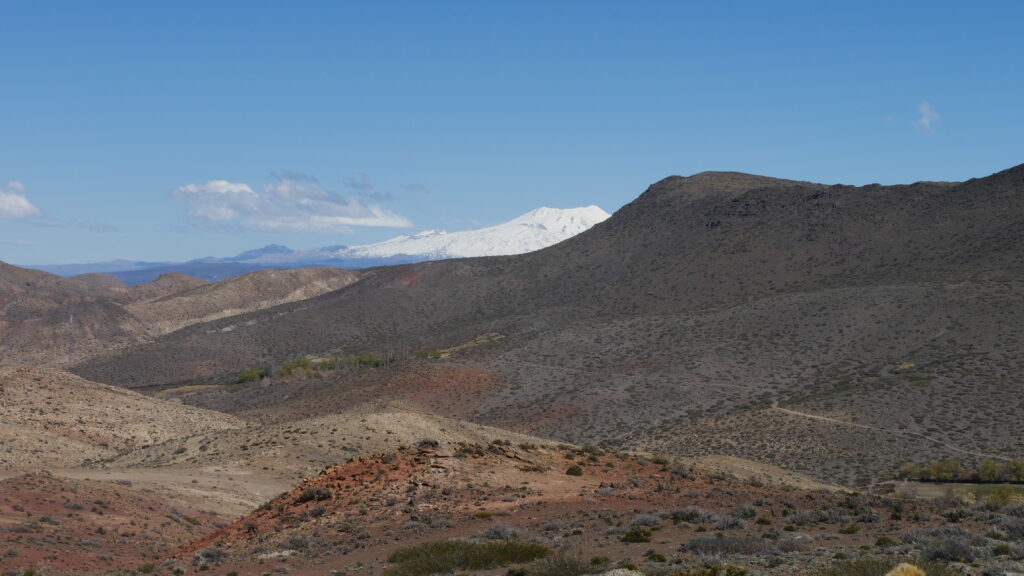
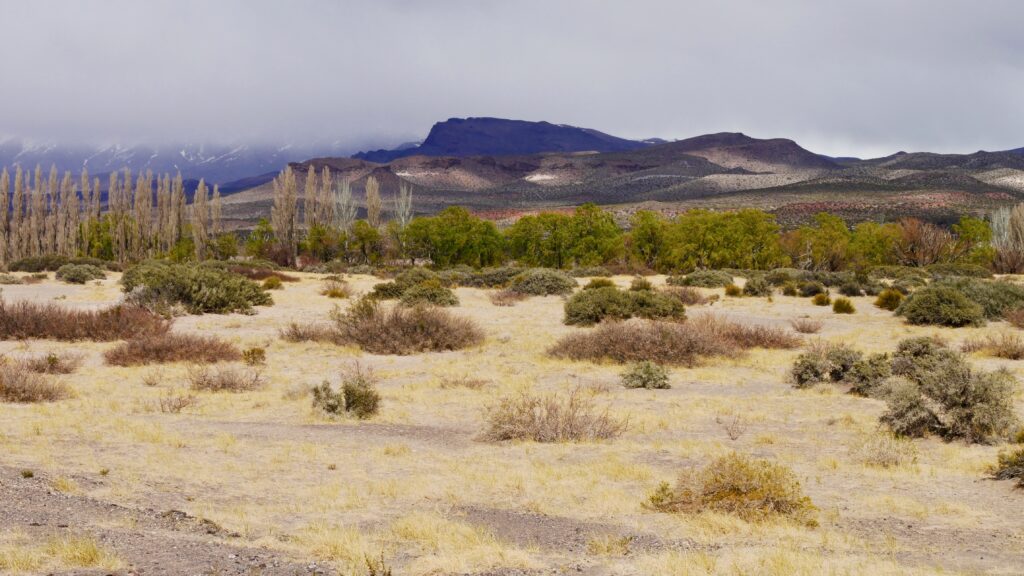
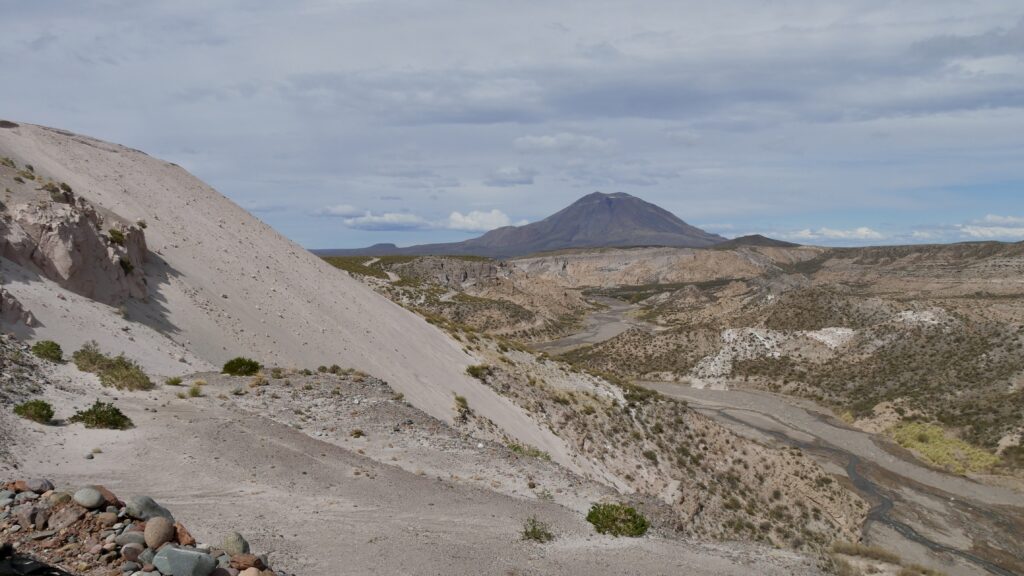
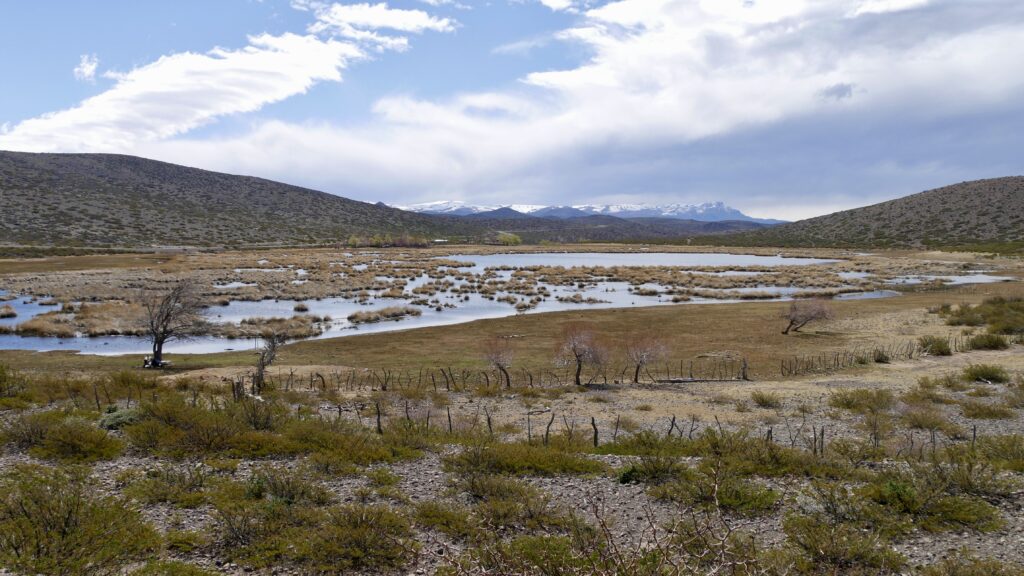
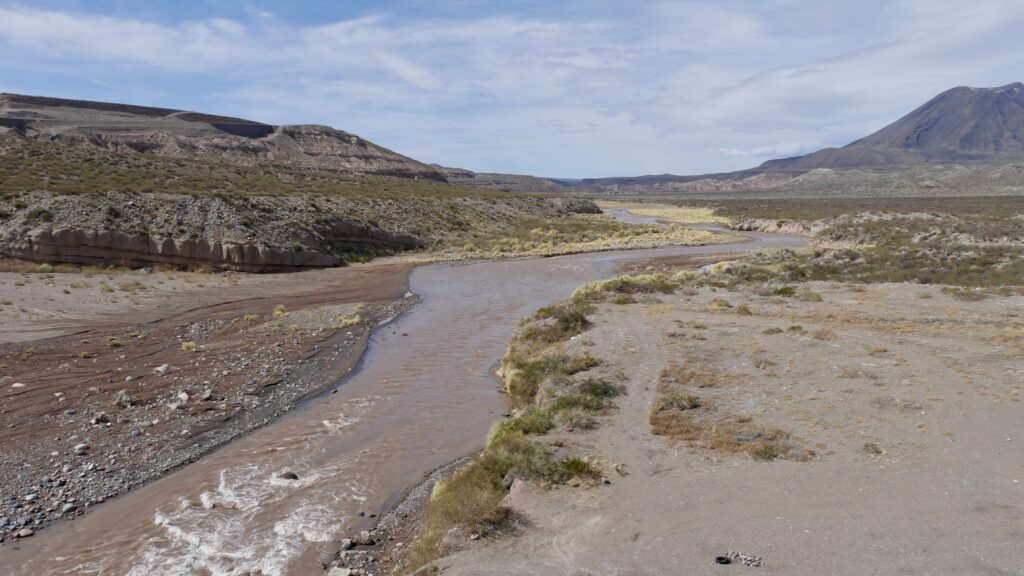
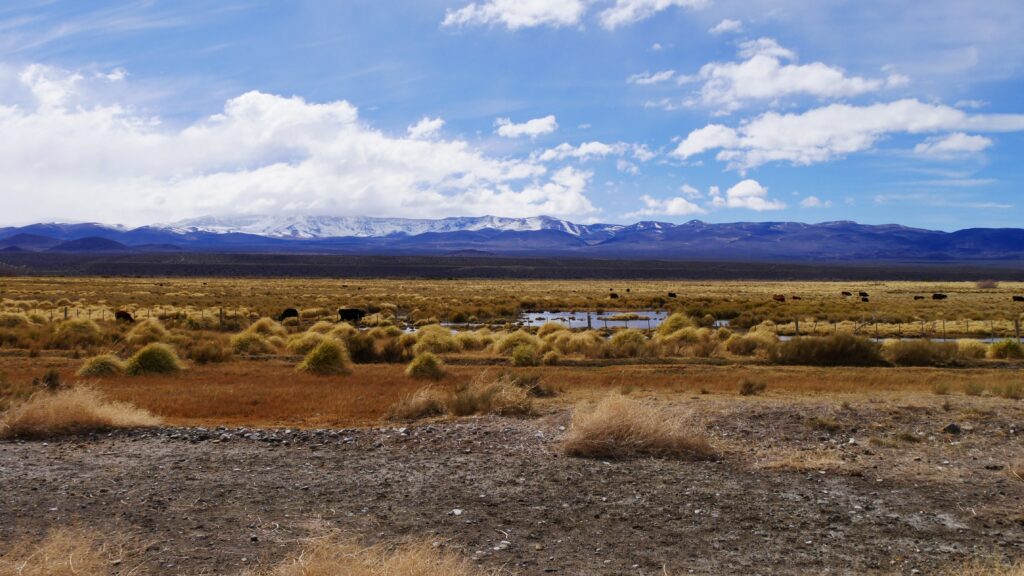
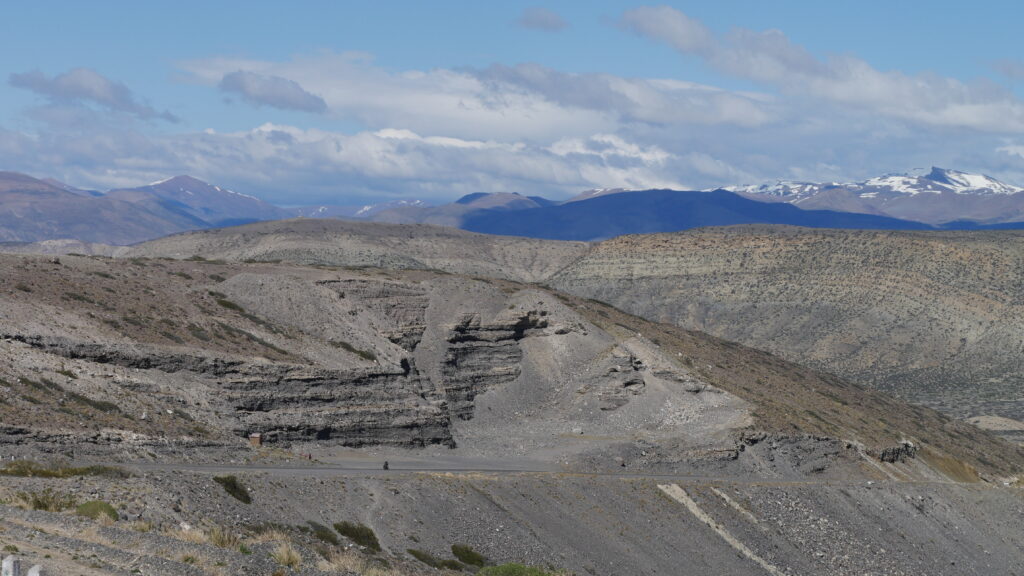
Those first few days are spent searching for a place to camp while the wind rages across the plain. The second night we find shelter in a storage room of a sports club. We are also allowed to use the toilets. Apparently this has already been offered to several people while the water is shut off. So I still prefer to pee outside in the grass.
Both in the evening and in the morning Paul patches flat tires, much to his frustration. When even before we leave the village one of the tires is flat again, he has had enough. He is fed up with it! He doesn’t even care anymore at which bakery we buy the bread for today… and that’s saying something. I quickly pop into the best bakery in town and then we walk to the nearest bike shop. The enthusiastic man admires our bikes, chats Paul’s ears off (a Español) and fills his tires with anti-puncture fluid that should seal the holes immediately as they occur. All this happens behind my back, as I have secured a front-row seat in the workshop to watch the last 13km of a Vuelta stage. And what a stage! Vingegaard wins the stage, Kuss retains the red jersey and Roglic crosses the finish line in third place. The fluid seems to work and Paul’s filled puncture stays unsticked hard. Me happy, Paul happy, bike mechanic happy!
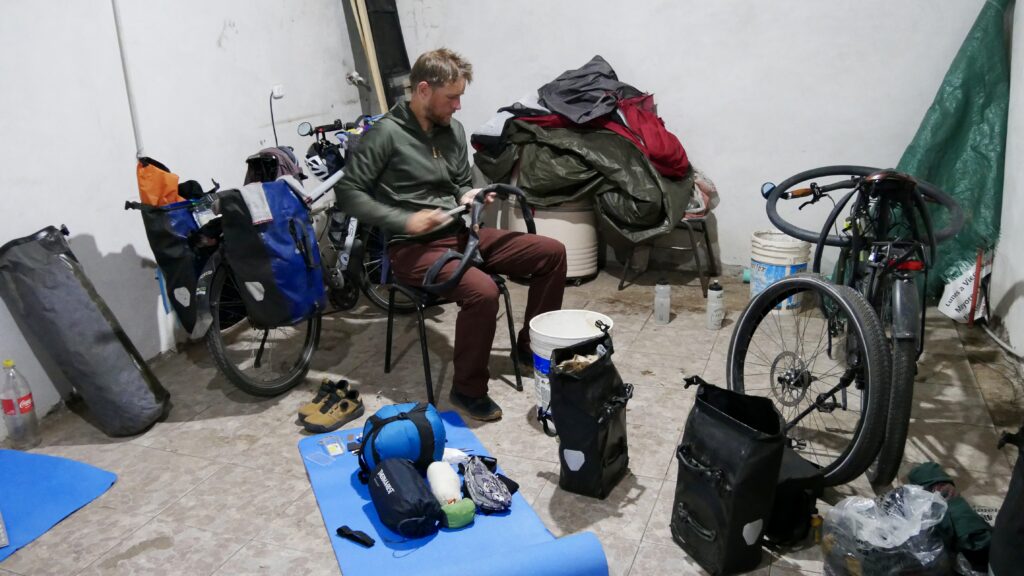

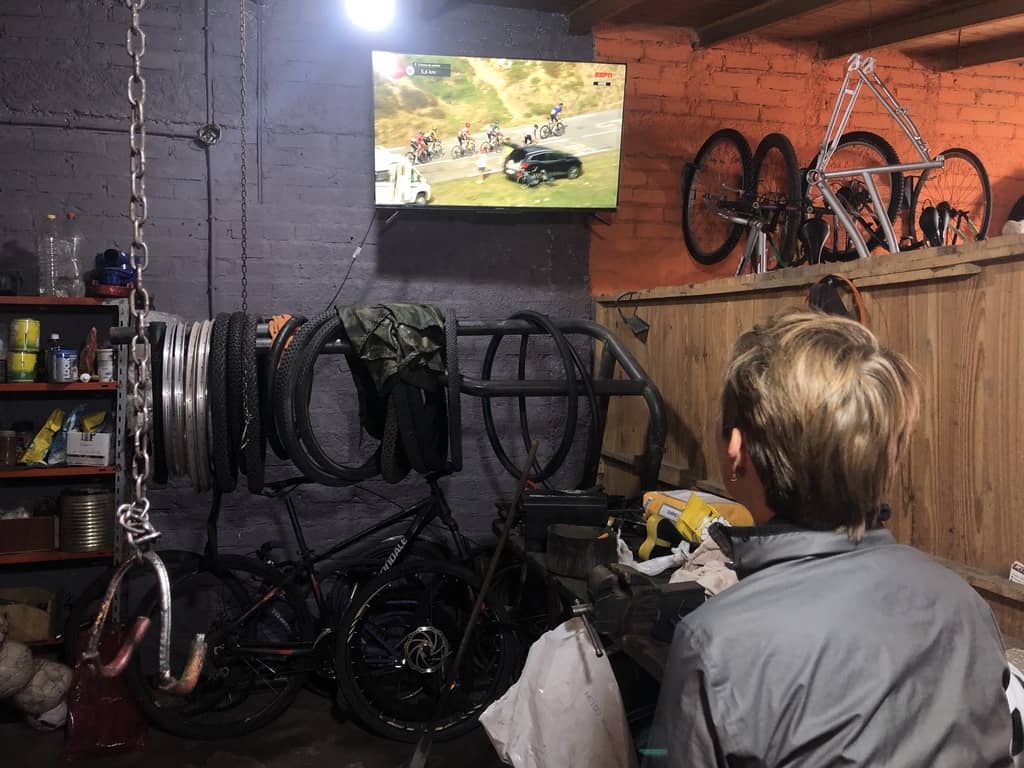
On the map we search for any sign of habitation in the 150km we have to cover between two villages. We hope for some shelter on the sandy tracks that will lead to an excavation. At the encampment of the excavation we meet Diego and his colleague. They man the place day and night and we are more than welcome to pitch our tent in the lee of the buildings. The toilet is also at our disposal. Soon the camp dog is climbing all over Paul.
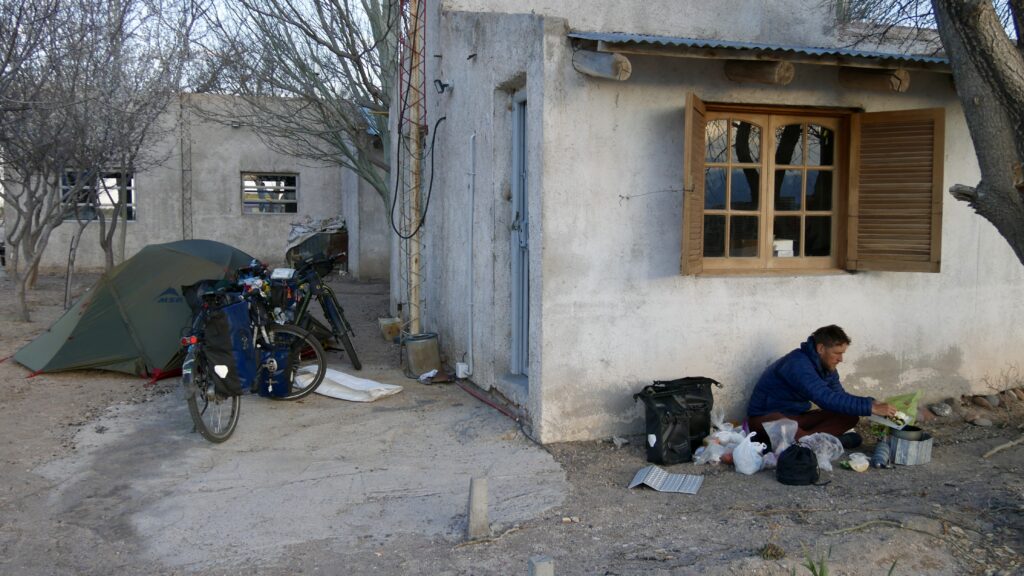

The next day, the divine fan blows even higher and by late afternoon we yearn for a place out of the wind. In vain we drag our bikes through a minefield of prickly bushes expecting to find lee in deep ditch along the road. Back on the road, I see a small settlement in the distance. Recognizable primarily by the planted trees rising above the barren landscape. We turn onto the dirt road and on the spot the friendly Hannibal shows us a completely sheltered spot in barn near the hay bales. When I ask for a toilet, he carefully points around and even into the barn itself. By the way, on the other side of the barn’s wooden bulkhead, a horse, some calves and a flock of chickens are relieving themselves on the spot as well. Hannibal brings us another box that can serve as a table as well as two matching tiny chairs. We sleep peacefully despite the turbulent wind that makes the barn squeak and creak in its shaky joints.
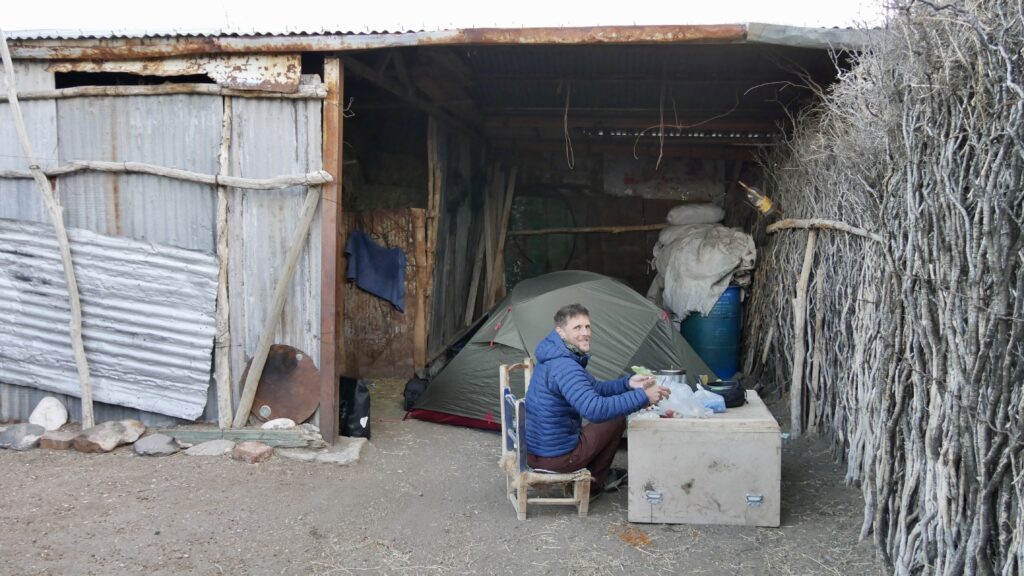
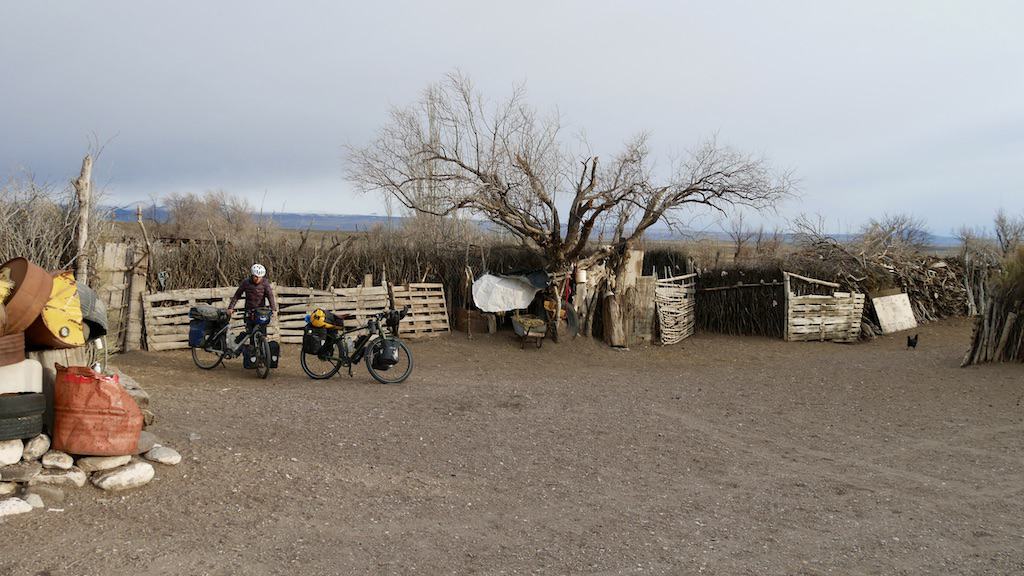
As I just sat down to write this blog I thought back over the past two weeks and what I could say about them. We have cycled … through a vast and dry landscape in many shades of brown and with accents of red, green and yellow here and there. The kind of landscape I love. The kind of landscape where only unfriendly bushes with thorns and spikes survive and where settlements can be identified by their long-established trees. The kind of landscape that reminds me of the middle east and the books I like to read that are set there. The kind of landscape I know from Kazakhstan, southern Russia, Tajikistan. Then, however, such a landscape offered me numerous stories of encounters with residents who took me in, fed me and made me part of their tradition, meals and with whom I tried to exchange stories in sign language and an occasional word of English or Russian.
I have no such stories to tell right now. Not for the time being. So far I have experienced the Argentine people, both in town, village and in the countryside, as very friendly, helpful in what you ask of them, but also as quite private. The only question we get to answer here is where we came from today and where we are going, otherwise no questions are asked, except the question of whether we might want hot water. Indispensable for the Argentines to prepare their traditional drink maté. Except for the house of the Biciadventuras, I have not yet gotten a glimpse into an Argentine house or their specific customs or way of life. Even the WarmShowers lodging places I have used regularly before are not represented here much. Instead, we often settle down at the “camping municipal’s” found here in many villages. It makes traveling much more relaxing; little or nothing is asked of us. At the same time, I also notice that I miss the cultural aspect that was so emphatically present on my previous trips. I don’t “undergo” the culture as yet. I travel through the country, the people remain at a certain distance. I wonder if this will change as we continue our journey in Argentina or if it will wait until the less westernized countries such as Bolivia and Peru.

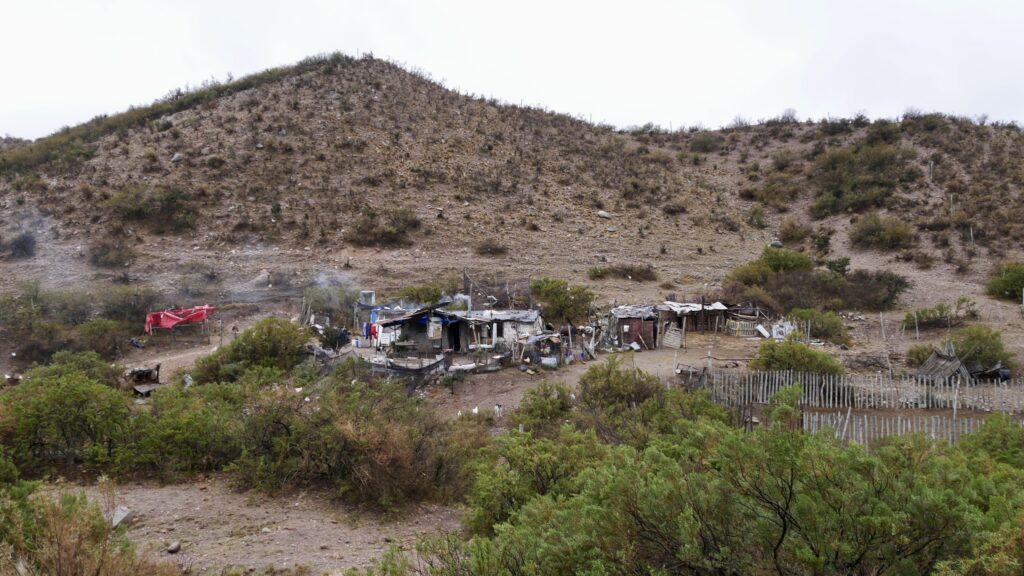
Still, I try to pick up what I can from the culture. One of the public cultural expressions not to be missed are the small “shrines” that can be found along the road. They come in all shapes and sizes, set up independently by people. Some are in honor of Saint San Expedito. Once he was commander of the Roman army. Now patron saint of the army, as well as travelers, students and young people, and the saint to invoke when faced with protracted legal problems. With an inflation rate of 150% in one year in the country, it’s no wonder we see him everywhere here!
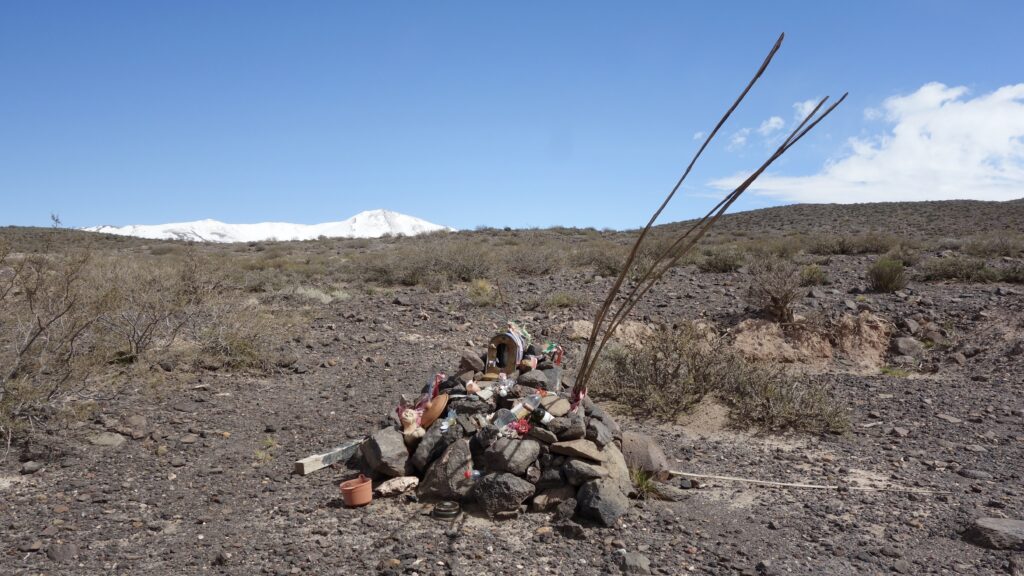
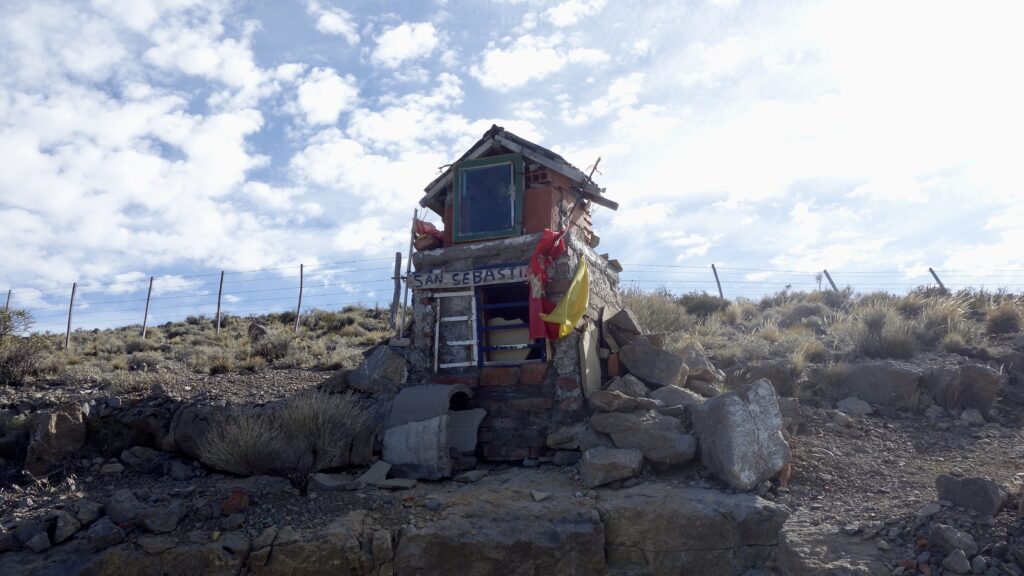
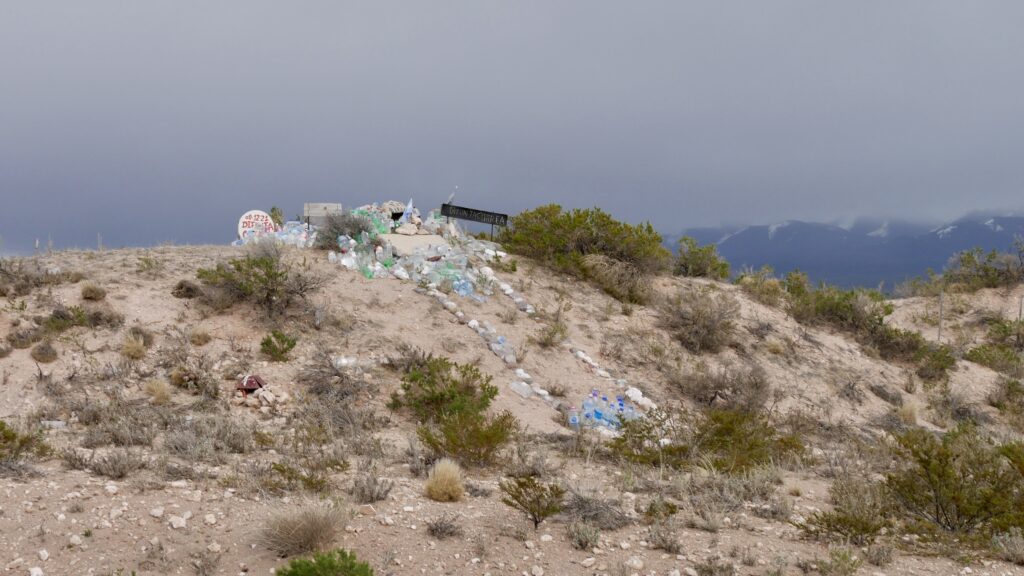
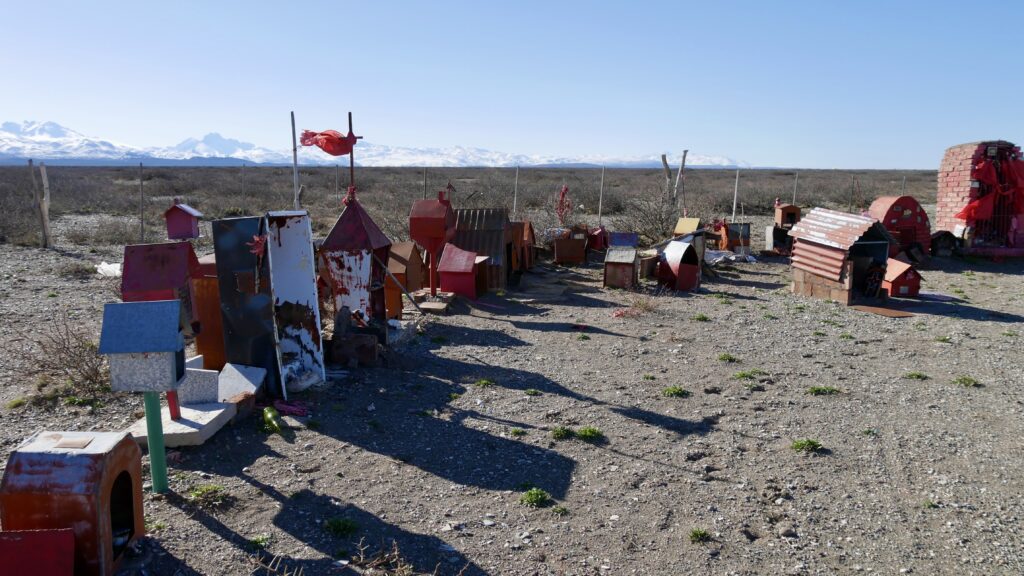
The first somewhat larger town we hit after Mendoza was Malargüe, a base for winter sports in nearby Las Leñas. We reach it after braving weather and wind and me covering several kilometers on foot because I literally get blown off my bike too often and can’t keep it on the right side of the road. Soon we understand that the turbulent previous days and threatening gray clouds have brought a good deal of fresh snow to the ski area. Paul’s feet are itching to get on a snowboard. And why not? Gear rental costs less than 20 euros, a ticket for the shuttle bus 1 euro for a one-way ticket and a day ticket for the slopes 26 euros. A godsend, compared to Chamonix or Paul gets a snowboard and for safety (I’ve never skied before) I opt for a pair of snowshoes and a sled. In the early morning, we drive in a warm bus toward the snow. On the spot, to my disappointment, we are told that I am not allowed on the slopes with my sled and the special sled play park “Parque Aventura” is closed. However, on a slope outside the slopes there is plenty of sledding going on. And crashing… because steering is not an option with such a thing. After a few hilarious rides we seek refuge on the slopes again. After some pressure from Paul I decide to try my hand at snowboarding. Hand in hand we go down the mountain bit by bit. For Paul, who runs with me, it is much more intensive than for the sliding me. Even uphill I can let the drag elevator pull me up while Paul lugged our heavy daypack (Dutch, so we brought our own tea and food) up the mountain again and again. My first experience of winter sports, on a slope full of fresh snow in Argentina, is top notch! With a burnt lower lip (which I would remember for a long time) and a tad chilled, but satisfied, the bus takes us back to Malargüe at 17:30.

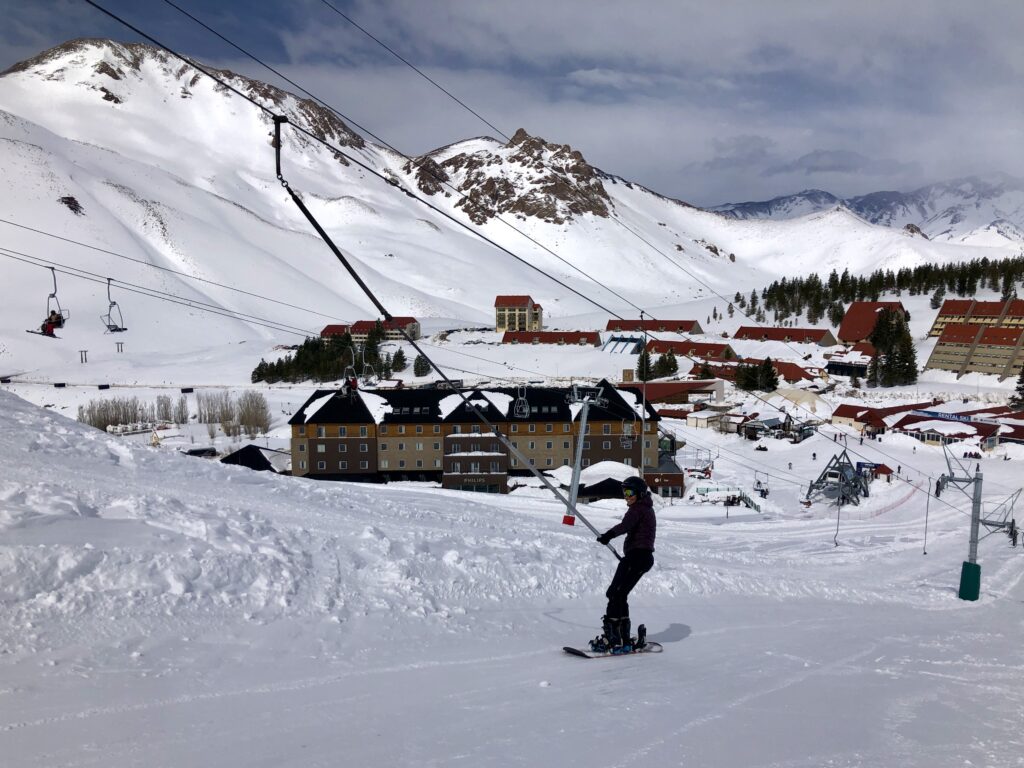
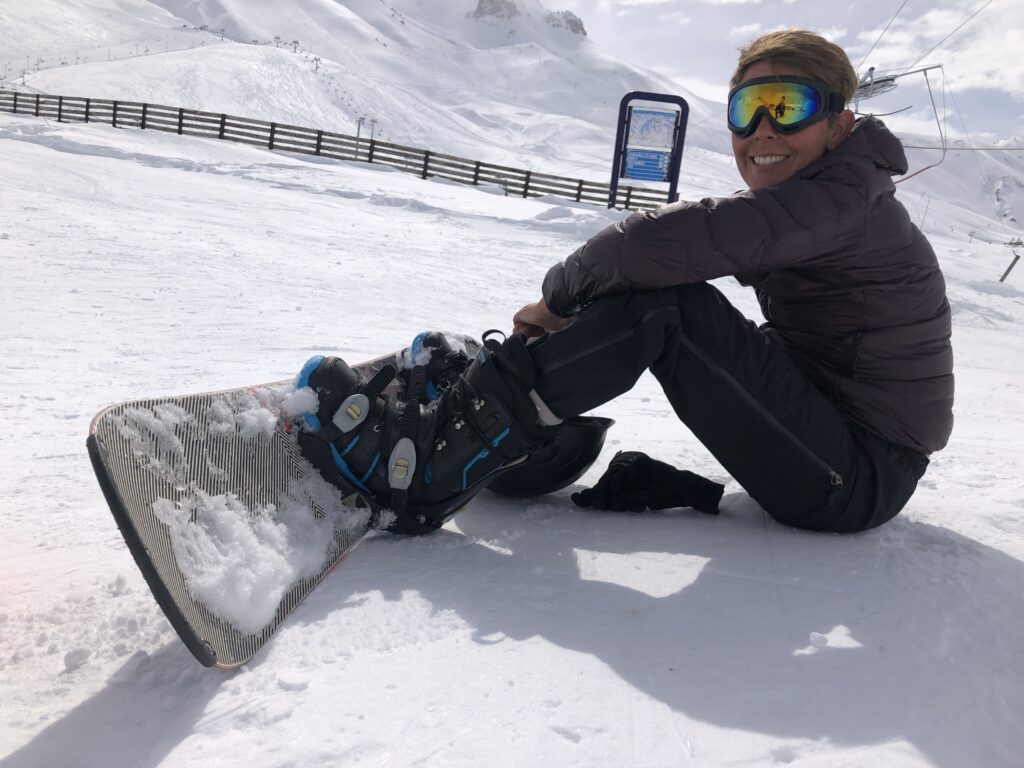
After this “rest day,” we decide to stay in Malargüe just one more day. In the morning we visit a mini museum. When we then walk through the village in search of a warm coffee shop or bakery to read or write, we are disappointed. Even in this somewhat touristy village everything is closed between 12:00 and 16:00/17:00. So we wander around. The “camping dog” has already joined us in the morning. During the day we are joined by a happy puppy (Mini) and a brown stray. They follow us all day. No wonder since Paul buys them dog food and shares his lunch with them. I remove a tick from Mini and in a day also bond a bit with the other two. Wherever you go here, there are dogs everywhere! And no growlers. Gentle, affectionate dogs!

Both Paul and I are vegetarians as well as animal lovers, and we enjoy watching all the animals along the route: horses, donkeys, sheep, goats (unfortunately for slaughter), cows, strange birds and marmots. They watch us as we cycle by.
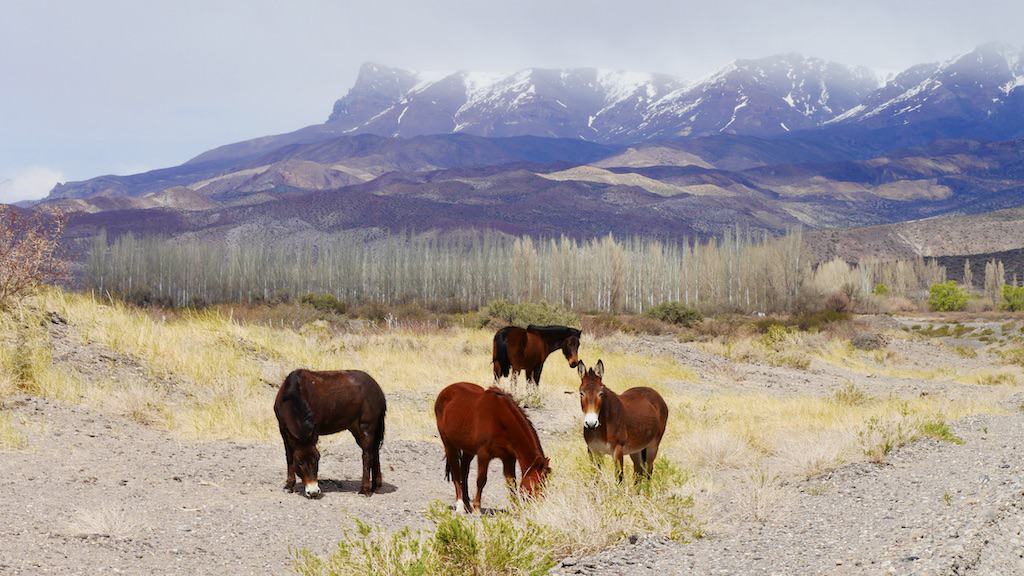

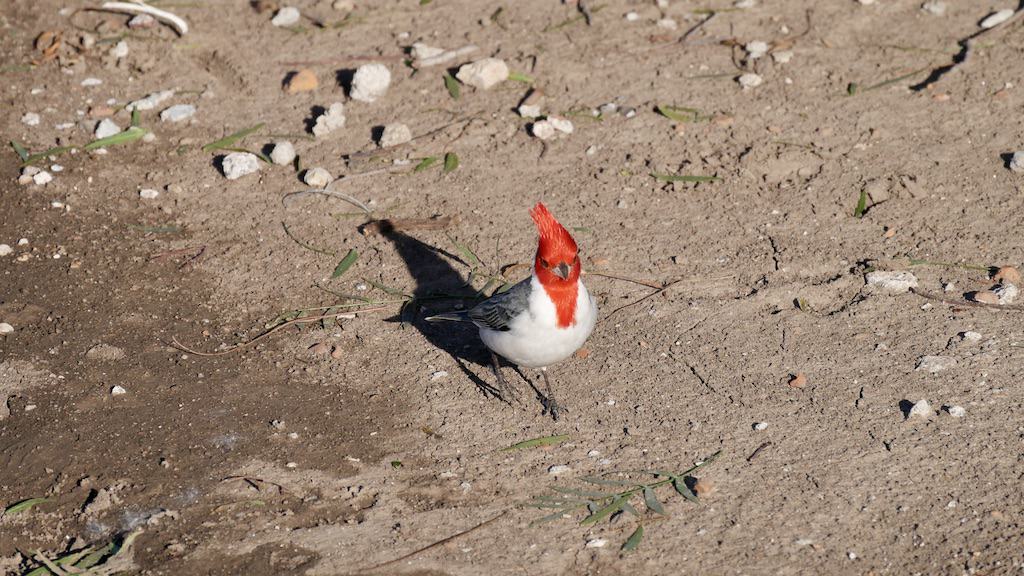
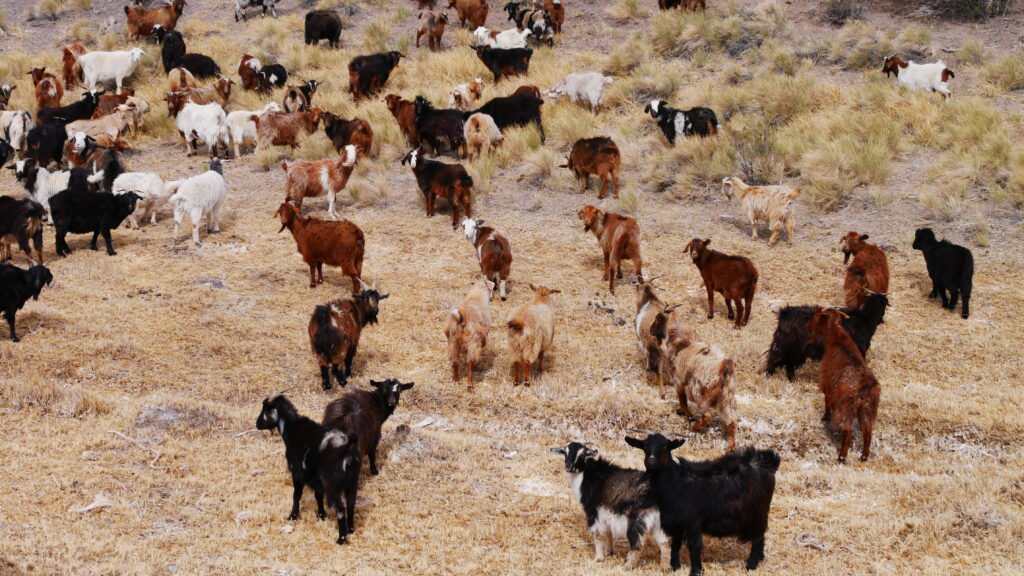
More than once we are warned about the 83km of gravel waiting for us on the stretch between Bardas Blancas and Barancas, which would consist of large pebbles. We can worry about it, but we’ll have to cross it anyway, so I’ll leave worrying. There was no exaggeration, the gravel is bad! It is many times better to cycle on a road that is meant to be “unpaved” than on one that is in preparation to be paved someday. We rejoice in the morning wind blowing at our backs and letting us bounce over the boulders with some extra speed. Wind in the morning here, however, gives no guarantee of what awaits you in the afternoon, or the next day, or days. The gravel stretch takes us two days and frustration but in the meantime we are treated to beautiful views and the occasional warm sunshine. In this respect, the same applies to the temperature as to the wind. If the sun hides behind the clouds, it often feels like a Dutch winter day. If it opens up an hour later, the leggings, gloves and jacket can be removed and it feels like summer!
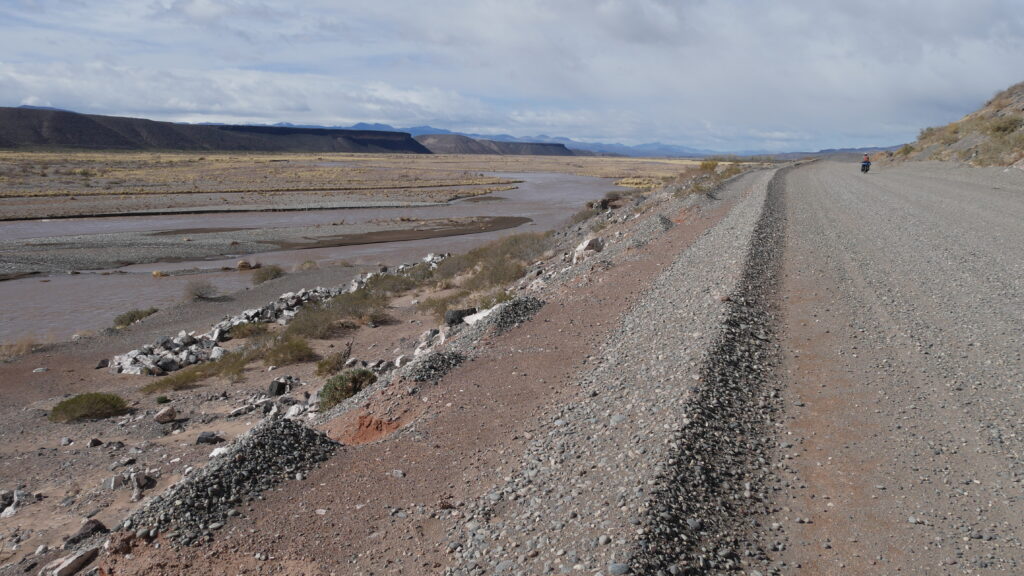
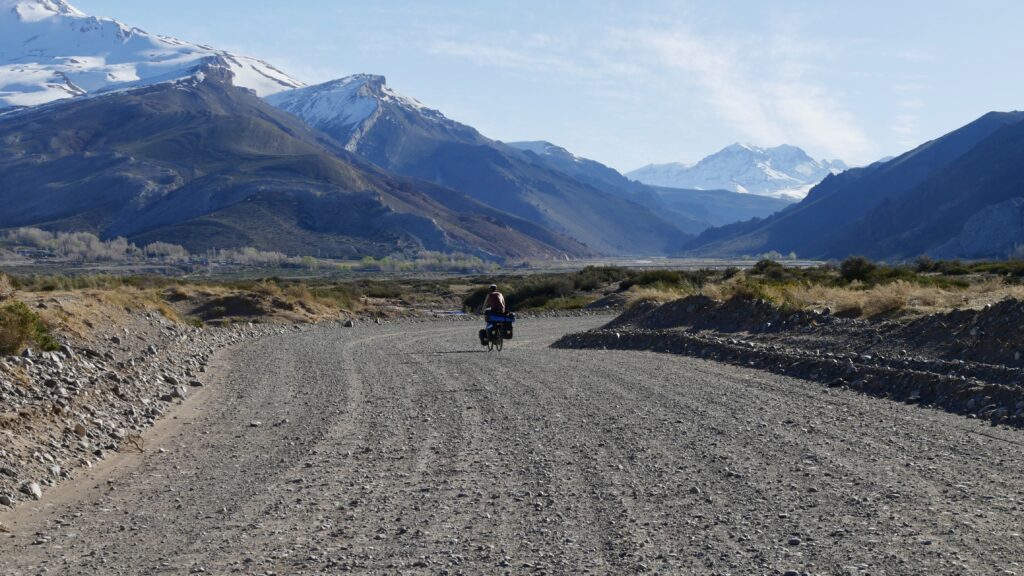

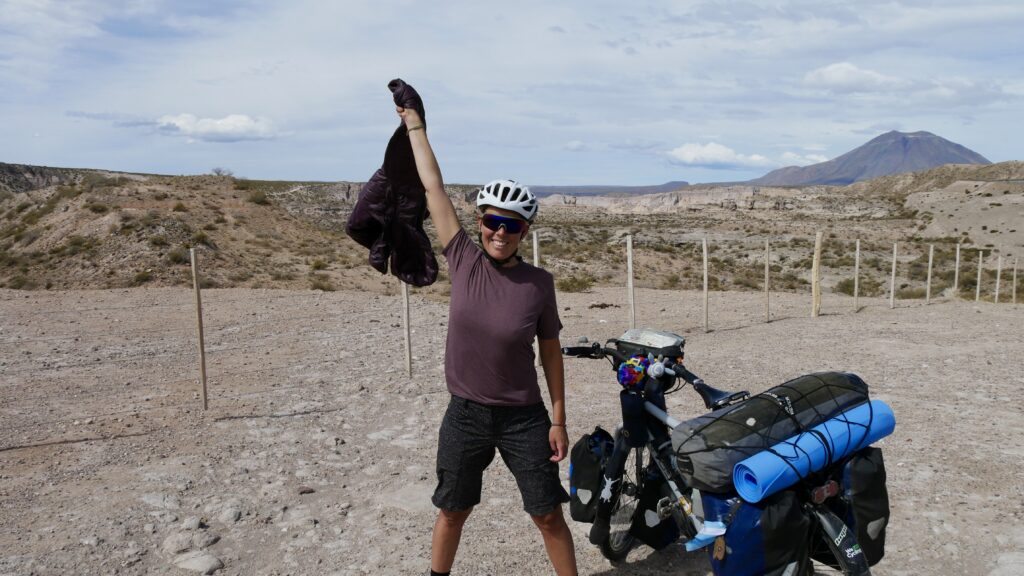
Paul and I have found our rhythm. After arriving at a camping spot, I pitch the tent and set it up with our sleeping gear while he prepares dinner. In the morning, he sets up for breakfast and I pack up the whole mess again. Once in a while we turn the tables. Paul is simply a much better cook than I am. And I like to keep moving and working after we arrive on location. If there is a strong headwind, I can take shelter behind Paul’s back (as long as my knees stay weak, of course) and…. well, I don’t really have anything to counter that…. Maybe I try to cheer him up with jokes and songs when he gets discouraged by a too steep long climb, pebbles, flat tires or cold hands?
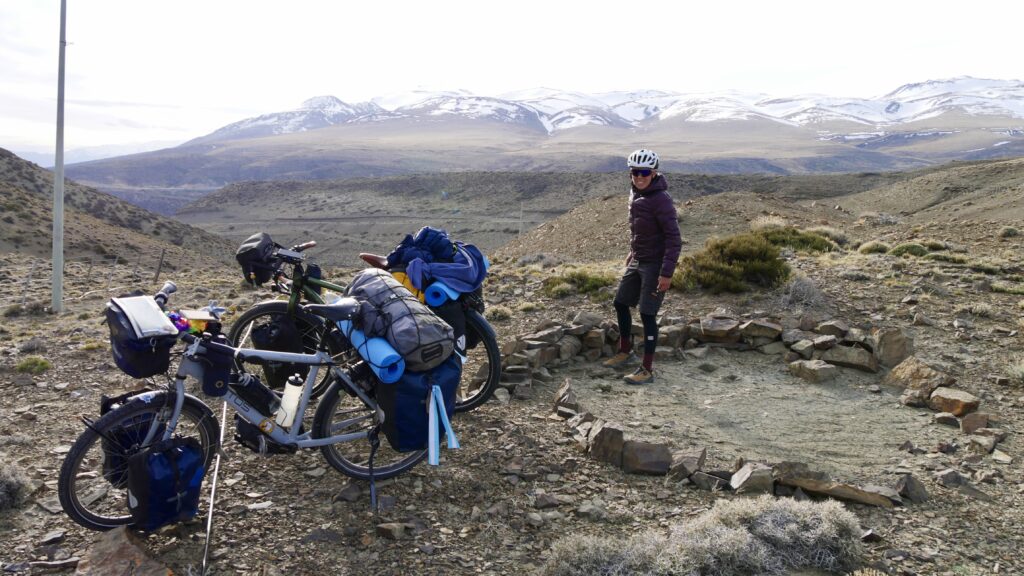
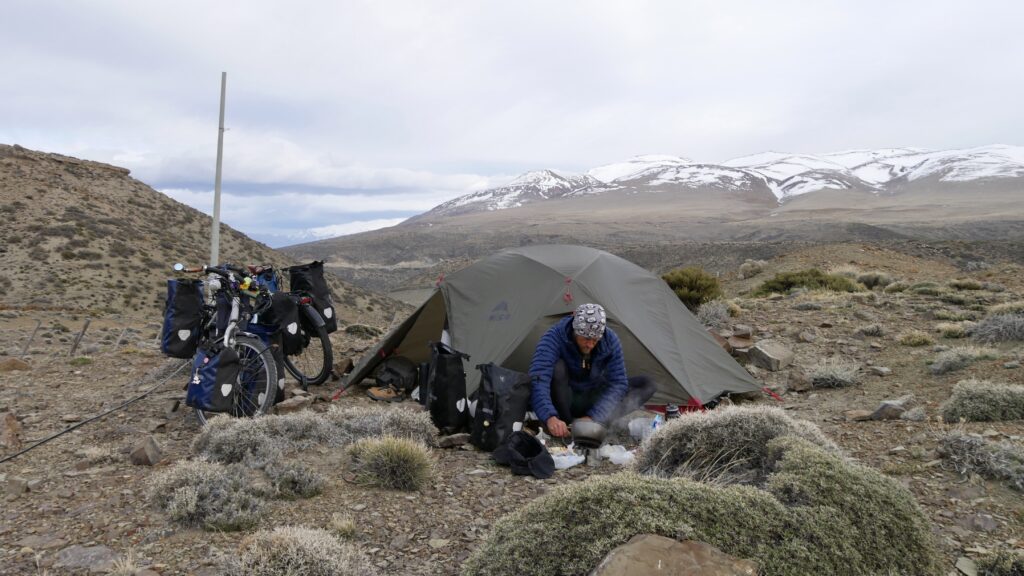
Tomorrow we continue our way south. The route is clear, the ruta 40! Bit by bit, the landscape promises to become more and more impressive (for now).
A warm greeting from Chos Malal,
Hera
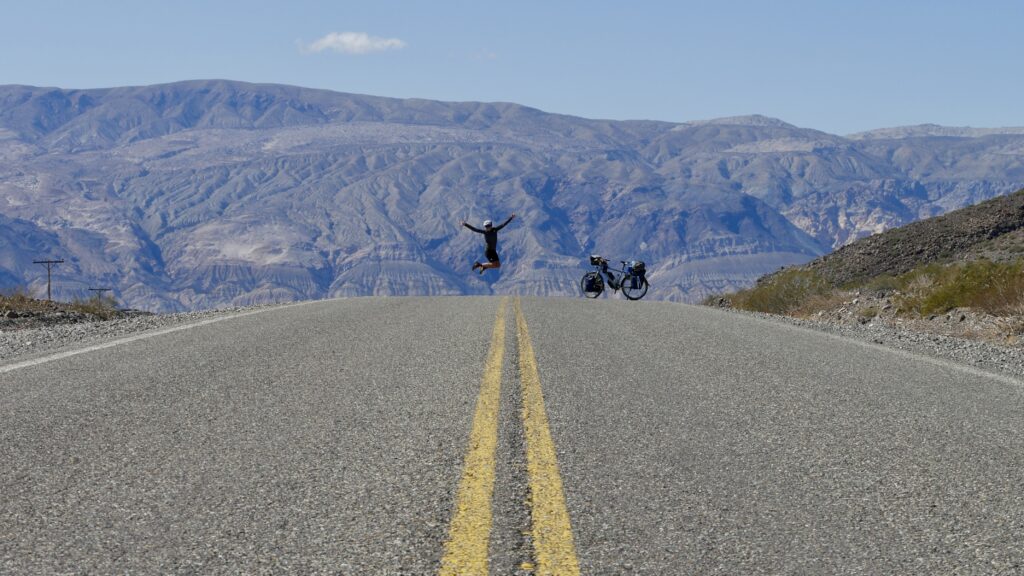


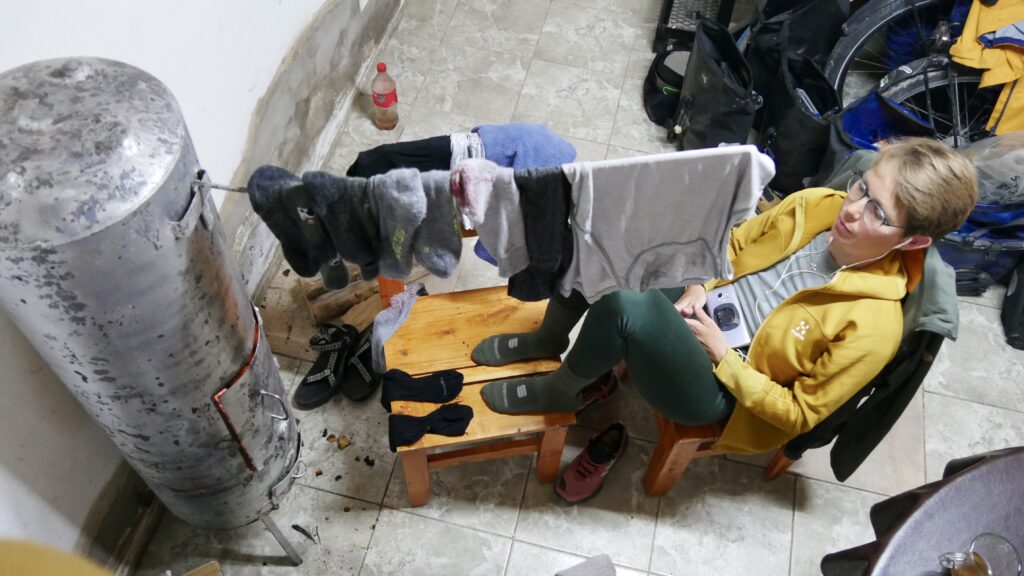
So enjoying your new adventure! Thrilled you are doing it with Paul! Love the read… keep them coming and the stunning photos. Greeting from Seward, Alaska!